Tag: Workouts
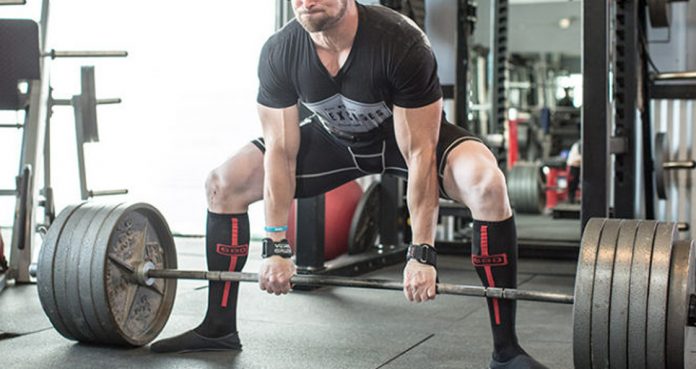
5 Tips To Master The Sumo Deadlift
Master the Sumo Deadlifts with these Five Tips
Deadlifts are some of the most brutal exercises which train your complete body. There are many variations of the deadlifts which will keep you from getting bored of the exercise. Sumo deadlifts have a greater impact on your hips, glutes and posterior chain.
Due to the limited range of motion, this variation of the deadlifts can enable you to lift heavier weights as compared to the traditional deadlifts. The sumo deadlifts are great for people who have a stronger lower body.
Since you get into a squatter stance while lifting the weights, your lower body does more work in this variation as compared to the traditional deadlifts. Sumo deadlifts are an advanced exercise and you need to perform them correctly to get the most out of them.
1. Find a Stance Which Works For You
There are no hard or fast rules when it comes to the sumo deadlift stance. The stance will vary for people based on their height and mobility. Some people have a false notion that the wider your sumo deadlift stance, the better it is. Most people need a moderate sumo stance to lift heavy weights while maintaining the correct form.
The sumo deadlifts are harder at the bottom. It is harder to move the weights off the floor than it is to lock our your hips and back at the top of the movement. Take a stance which makes it easy for you to lift the weights off the ground.
2. Get Your Body Behind the Bar
Some people make the mistake of ducking out their toes, doing this automatically puts the bar an inch in front of them. On the other hand, some people stand on top of the bar which is not the best position to start either because the bar can bump into your knees on the concentric movement.
Standing right behind the bar with your shins touching the barbell is the best position to start the lift. Keeping your head and chest behind the bar at the start of the movement will help you in locking out your hips and knees at the top of the movement.
3. Point the Toes Out
Feet placement is where most people go wrong with the sumo deadlifts. You neither want your feet to be pointing all the way out nor should they be pointing straight ahead. You want the barbell to be as close to you as possible while performing the sumo deadlifts.
If you stand with your feet completely “ducked” out, the bar will be an inch in front of you which can make it harder to lift it off the ground. Turn your feet slightly out as doing this will make the lift shorter and easy.
4. Generate Torque and Push Your Hips Through
As mentioned above, the sumo deadlifts are the hardest at the bottom of the movement. You need to generate a lot of torque to crack the bar off the floor. Make sure you push your knees out so they don’t come in the way of locking out your knees.
If you’re a competitive powerlifter, you will need to stand with your knees and back locked out at the top of the movement. Drive your hips into the bar to finish with a smooth lockout. Some people make the mistake of overextending their lower back which can unlock their knees.
5. Hand Placement
The hand placement while performing the sumo deadlifts can be tricky. Some people like to have a wider than shoulder width grip while the others like to keep their hands close to each other. A shoulder-width hand placement can prove to be the most optimal.
Holding the bar too wide can put extra tension on your lower back while a close grip can make it hard for you to balance the bar.
What is your sumo deadlifts PR? Let us know in the comments below. Also, be sure to follow Generation Iron on Facebook and Twitter.
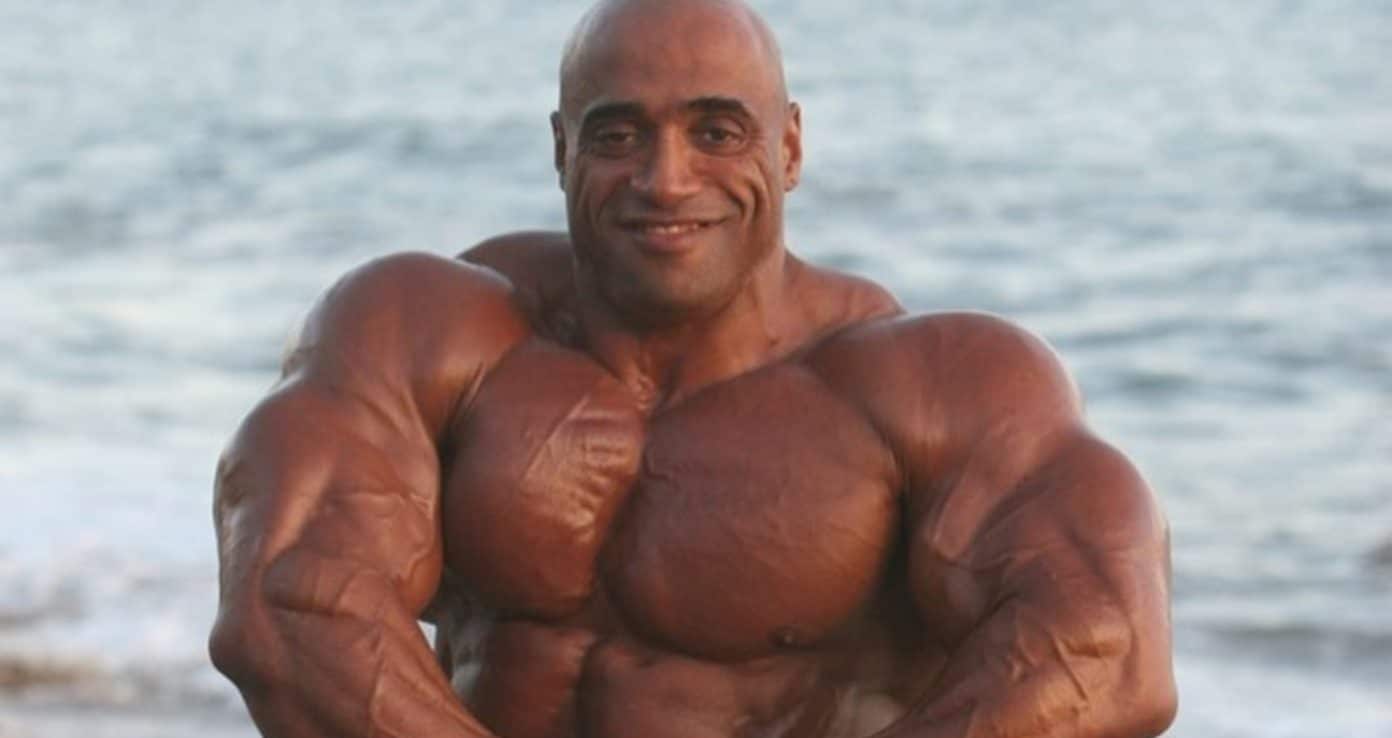
How Dennis ‘The Menace’ James Works Out For Upper Body Gains
Get a great pump like Dennis James himself and see serious gains.
Dennis James is a former professional bodybuilder from Germany who is well-known for his personality and successful bodybuilding career. With a big following on social media, he uses his platform to post new photos, throwbacks of his bodybuilding days, and those posts to inspire others to make their own desired changes.
For many of us, finding the right workout can be a challenge and one we may not be up for. We live busy lives, deal with a lot. The last thing we want to do is take time to sit and decipher who online is telling the truth and who is just plain lying. But it doesn’t have to be that hard. With professional bodybuilders and other athletes who now having larger platforms, we can take their workouts and what drives them to succeed and apply to our own routine and lives. Use these pros for they have done it before and know exactly what needs to be done to succeed at the highest of levels.
Dennis James has had a long and accomplished bodybuilding career and is definitely one to take notes from. He has competed against some of the best in the world and it wasn’t just by chance. His approach to training and nutrition is top notch and has served him well throughout his career.
Full Name: Dennis James
Weight
Height
Date Of Birth
255-265 lbs.
5’8’’
05/31/1966
Profession
Era
Nationality
Bodybuilder
1990, 2000, 2010
German, American
This upper body workout from Dennis consists of chest, arms, and shoulder exercises to give you a well-rounded and massive physique. By targeting this muscle groups individually, you can pay more attention to building each of them, working on mind-muscle connection, and seeing the gains you want most.
About Dennis James
Dennis James is a former professional bodybuilder born in Germany. He was always active and started training at a young age. But when he was 18-years old, he started bodybuilding and his training went to a whole new level. He began competing in junior competitions and would eventually grow his name more and more until he finally began competing on the biggest stage. He competed at Mr. Olympia seven times and proved he had what it took to be the best in the world.
He has been featured in many magazines and his social media presence is massive. His relationship with two-time Olympia Champ Big Ramy also brings increased notoriety as he continues to promote the sport of bodybuilding while inspiring others so they can succeed as he has.
Dennis James Training Routine
Dennis focuses on those heavy movements, and with his training partner as two-time Olympia champ Big Ramy, their workouts are simple but highly effective at seeing results. Dennis created an approach to lifting called the Menace Time Under Tension. Essentially, this involves lifting the weight slower, really involving the full range of motion and then returning to the starting position at a normal speed. It helps reduce injury and only adds to your gains.
Let’s take a look at these chest, arms, and shoulder workouts so you can start to see serious gains and a massive physique you want most. A mix of machine and free weight exercises, as well as mixing in those compound and isolation exercises, gives you a well-rounded and versatile workout, leaving room for alternatives if need be. The nice part is that many of these exercises can be changed out for others to provide for muscle confusion and offer the best for gains.
Chest
Exercises
Sets
Reps
Incline Machine Press
3
10
DB Chest Fly
3
10
Push Press
3
8
Cable Chest Fly
3
10
DB Press
3
10
Incline DB Fly
3
8
Arms
Exercises
Sets
Reps
Triceps Pushdowns
3
12
Machine Preacher Curls
3
12
Skullcrushers
3
10
One Arm Preacher Curl
3
10
One Arm Triceps Pushdown
3
10
Concentration Curls
3
12
Seated Hammer Curls
3
8
Incline Triceps Extensions
3
8
Shoulders
Exercises
Sets
Reps
Lateral Raise
3
10
Front Raise
3
10
Upright Row
3
10
Reverse Pec Deck
3
10
Dennis James Nutrition
Dennis focuses on a rather simple plan but makes sure he eats plenty of calories and tons of protein. When he would be in the offseason, his carb intake would increase, but his meals would still consist mainly of protein, like lean meats, and carbs, like brown rice. Following a simple diet allowed him to eat well, eat the foods he needed to, and make life easy when it came to preparing and cooking food.
Why Upper Body Workouts Are So Important
Working our upper bodies makes a lot of sense. For those us bodybuilders, building that massive upper half physique is what everyone sees. But when it comes down to building real gains, the benefit of a strong upper body plays into all aspects of our training and performance, as well as physical health. Working to strengthen muscles around those supporting joints limits injury and we tend to use our upper body muscles for many functional movements. Posture, imbalances, and developmental support are just some of the key benefits associated with building a strong, stable, and massive upper half as you seek the best for your gains.
Along with these great workouts from Dennis James, consider upper body workouts like the close grip lat pulldown for back and bis, hanging leg raises for a stronger core, and kettlebell rows for a versatile exercise to boost pulling movements.
Wrap Up
This workout from Dennis James is one to certainly fire up your muscles to grow so you only see the best in terms of growth and overall gains. Dennis has had an amazing career and knows just what it takes to compete with the best. Using his workouts and other advice to better ourselves and our routines can help see gains as great as his as we seek to embark on our own bodybuilding or fitness journey. Give this workout a try, get the right supplements to help you, and see those gains you want most in no time.
Let us know what you think in the comments below. Also, be sure to follow Generation Iron on Facebook, Twitter, and Instagram.
*Images courtesy of Dennis James Instagram
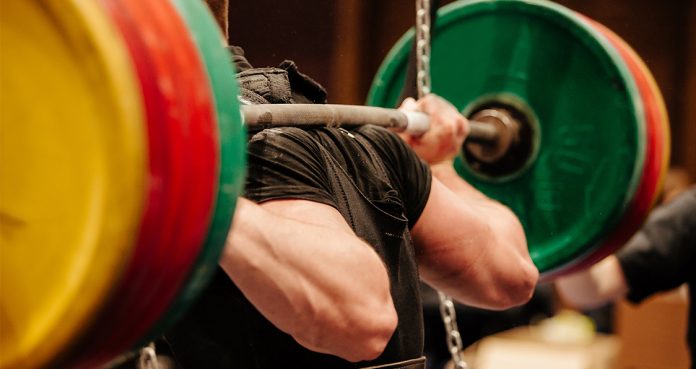
Front Squat Without Wrist Pain Or The Risk Of The Barbell Sliding
Vital Front Squat Grip Variations
The traditional back squats work your quads, hamstrings, and glutes while the front squats primarily target your quads. The front squats can be harder to perform as compared to the back squats. The front squats can put a lot of pressure on your lower back, wrists, and forearms.
If this wasn’t enough, there is always the possibility of the bar sliding forward while you perform a front squat. There are two variations of the front squat which can put varying degrees of pressure on your wrists and forearms.
The Weightlifter Grip
The weightlifter grip is also known as the full grip. A full grip involves holding the barbell with an overhand grip right outside shoulder-width. You need to keep your elbows pointed up so your upper arms are at least parallel to the floor.
The weightlifter’s grip requires mobility in your wrists, forearms, shoulders and lower back, and is the harder of the two variations to perform. The full grip can help you keep the weights pinned to your shoulders so you can lift heavier weights.
The Bodybuilder Grip
The bodybuilder front squat grip involves holding the barbell with a crossed-arm grip. The crossed-arm grip is used by people who have limited mobility in their wrists and forearms. You can only hold the barbell in place with the bodybuilder front squat grip.
You can’t actively push the bar into your shoulders while you perform a front squat with this grip. It is even more important to keep your elbows pointed up with the bodybuilder’s grip as the chances of the bar sliding forward are significantly higher.
Get Rid of Wrist Pain During Front Squats
If you use the weightlifter’s grip, you can encounter wrist and forearm pain while performing the squats. You will be in a better position if you perform a couple of warmup exercises and stretches for your wrists before going into the squats.
Extended Arm Wrist Stretches
The extended arm wrist stretches are the simplest warmups for the front squats. Extend your right arm with your palm facing the ceiling. Gently pull the fingers of your right arm towards your body with your left hand. Hold the stretch for 10-30 seconds.
Repeat the process with your left arm as the base arm. After you’re done with two sets of this exercise, point your palm towards the floor and repeat the stretching exercise. Doing this will warm up your upper and lower forearms.
Open Chest Stretches
The open chest stretching will help get your shoulders, chest, and wrists get warmed up for the front squats. Stand beside a squat rack with your arm extended and keep your elbow locked out.
Place your fingers on the squat rack and slowly start rotating away from the squat rack. After you’re done with the extended arm and open chest stretch, you’ll feel improved mobility in your wrists, forearms, and shoulders.
Avoid the Risk of the Bar Sliding Forward During Front Squats
Most people avoid performing the front squats because they can’t keep the bar steady on their shoulders. The bar sliding problem persists with both the weightlifter and bodybuilder grips. Before placing the bar on your shoulders, push your shoulders and arms forward so the bar can rest in the hole formed in the shoulder joints.
The best way to get rid of the bar sliding problem is to actively push your elbows upwards while you’re performing a front squat. Doing this will also help you keep your back straight which will put more tension on your quads.
At any point during the front squats, your elbows should not go below parallel to the floor. Looking at the roof while performing the squats can help you in keeping your elbows pointed up and your back straight.
Which grip do you use while front squatting? Let us know in the comments below. Also, be sure to follow Generation Iron on Facebook and Twitter.
*Header image courtesy of Envato Elements.
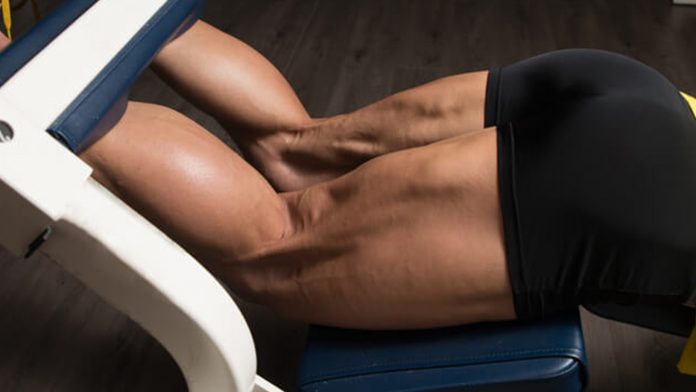
The Ultimate Workout for Building Shredded Hamstrings
Build Mass and Definition in Your Hamstrings
Most people have a love-hate relationship with training legs. They love to hate training their legs. Shredded legs are what separate the men from the boys. If you think building quads is hard, wait until you get serious about training your hamstrings.
Hamstrings are hard to develop since they are at the back of your legs. It’s hard to develop a mind-muscle connection with the hamstrings as you can’t see them in the mirror. Get ready to go through the most brutal hams workout of your life.
Exercise 1 – Wide Stance Squats – 3 Sets – 12, 10, 8 Reps
Squats are the king of all the leg exercises and we won’t miss utilizing it in our hams workout. Maintain a wider than shoulder width stance while performing the squats as it helps in recruiting hamstrings more than the quads.
Hip extensions help in activating the hamstrings, meaning your hams are most active as you straighten your legs and extend your hips. The wider the stance you take, the deeper your hips will flex resulting in exaggerating your hip extension and recruiting your hams.
Exercise 2 – Superset
– Leg Press – 3 Sets 30, 20, 10 Reps
– Good Mornings – 3 Sets 10, 20, 30 Reps
While performing the leg presses, place your feet at the top edge of the platform and keep the back support at a 60-degree angle. Keeping your feet at the top of the platform recruits your hams while placing them at the bottom activates your quads.
After performing 30 reps on the leg press, perform 10 reps on the good mornings. Keep your back arched and a slight bend in your knees while performing the good mornings. Don’t try to go too heavy on this exercise as it can lead to recruiting the lower back.
Exercise 3 – Lying Leg Curls – 6 Sets 30, 20, 10, 10, 20, 30 Reps
Lyings leg curls are for the legs what the preacher curls are for the biceps. Think of your hams as biceps and contract and squeeze them with every rep. By the end of the six sets, your hams should be filled with lactic acid and asking for mercy.
Change your feet placement on the pad with every set. Start the exercise with your feet placed wide apart on the pads. With every set, bring your feet closer and on the last set, your feet should be joined. The change in feet placement will work your hamstring from every angle.
Exercise 4 – Dumbbell Stiff Legged Deadlifts – 3 Sets 12, 10, 8 Reps
Dumbbell stiff legged deadlifts are a compound exercise and help in building muscle mass and strength. Keep your knees bent throughout the exercise and pause and squeeze your hams at the bottom of the movement.
Performing the Romanian deadlifts with dumbbells instead of a barbell gives you better leverage and can help with activating your hamstrings. Place your toes on a quarter plate to increase the leverage further by increasing the range of motion.
Exercise 5 – Superset
– Barbell Hip Thrusts – 3 Sets 20, 15, 10 Reps
– Glute Ham Hyperextensions – 3 Sets 10, 15, 20 Reps
The barbell hips thrusts and GHD target the hams and the glutes and can improve the separation between the muscles. Keep your feet shoulder width apart, maintain a full range of motion and pause at the top of the movement while performing the barbell hip thrusts.
Glute ham hyperextensions have been brought into the spotlight by CrossFit athletes. If you don’t have a GHD table at your gym, lie down on a flat bench and ask someone to sit on your calves. You could also perform this exercise on a lat pull-down machine by placing your knees on the seat and inserting your ankles between the seat and the pads.
Do you train your hamstrings and quads on the same day? Let us know in the comments below. Also, be sure to follow Generation Iron on Facebook and Twitter.
*Header image courtesy of Envato Elements.
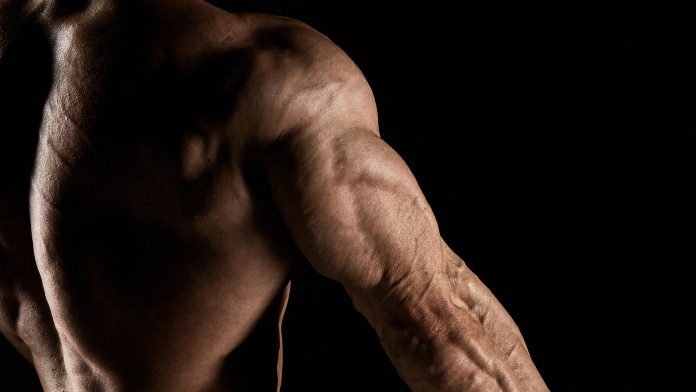
5 Exercises To Build Horseshoe Triceps
5 Exercises To Build Horseshoe Triceps
If your goal is to build sleeve-splitting arms, you can’t overlook your triceps. Most people make the mistake of going too hard on their biceps but skip training their triceps. Your arm development can never be complete without some ripped triceps.
Your triceps have three heads; long, lateral and medial. You need to be training them from all the angles to ensure an overall development. A combination of isolation and compound exercises is the most effective way of building horseshoe triceps.
1. Cable Pushdowns – 3 Sets 15 Reps
Cables are a great way to maintain a constant tension on your target muscle throughout the movement. While using the cables, you have the same amount of tension on your triceps at the top of the movement as you have on the bottom.
Stand at an arm’s length from the pulley machine. Attach a straight bar to the pulley and grab it with an overhand grip with your thumbs over the bar. Keep your elbows pinned to your side and hold and squeeze your triceps at the bottom of the movement.
2. Skull Crushers – 3 Sets 12 Reps
Skull crushers are an incredibly effective exercise when it comes to building ripped triceps. This exercise is also known as head smackers. Skull crushers train the long head of your triceps. The long head is also the hardest part to develop as only a few exercise can target it optimally.
You can use a straight bar or an EZ bar for this exercise. Make sure you have a complete range of motion while performing this exercise. Keep your elbows fixed at a single position, hold and squeeze your triceps at the top of the movement.
3. Smith Machine Close Grip Bench Press – 3 Sets 12 Reps
Smith machine close grip bench press works on the medial and lateral heads of your triceps. Using a Smith machine adds tension to your triceps while performing this exercise. Performing exercises with a complete range of motion are the secret to building horseshoe triceps.
Keep your elbows pinned to your sides throughout the movement. If you don’t have an access to a smith machine in your gym, you can perform the close grip bench press on a flat bench.
4. Cable Overhead Rope Tricep Press – 3 Sets 15 Reps
Ropes can target your triceps from a completely new angle. Overhead presses train the long head of your triceps. Keep your elbows pinned to the side of your head throughout the movement.
Keep the ropes together at the bottom of the movement, spread them out at the top and squeeze your triceps. Make sure you’re not using momentum while performing this exercise. Use moderate weights so you can handle and keep your reps slow and deliberate.
5. Dips – 3 Sets 15 Reps
By this point, your triceps will be completely exhausted. Dips can be a complete triceps buster and are a great exercise if you want shredded triceps. You can perform this exercise on parallel dip bars or on a flat bench.
If bodyweight version of this exercise is too easy for you, you can add extra resistance by using weights. Follow an explosive motion while performing this exercise. Hold and squeeze your triceps at the top of the movement.
Which is your favorite triceps exercise? Let us know in the comments below. Also, be sure to follow Generation Iron on Facebook and Twitter.
*Header image courtesy of Envato Elements.
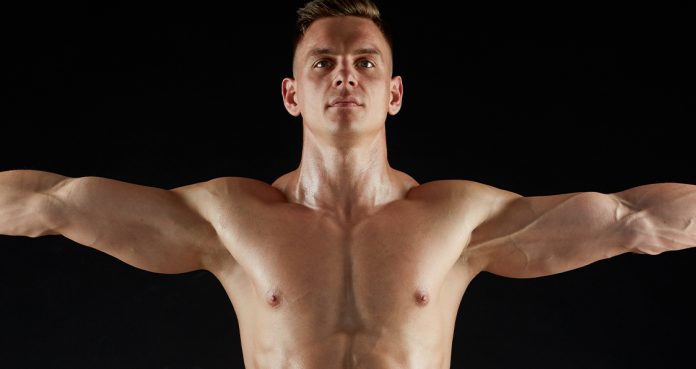
How to Turn Your Toothpick Neck into a Wood Log
Build a Thick Neck With These Exercises
Many people will be curious after reading the title as only a few people in gyms around the world train their necks while the others have a pencil neck. It might come as a shock to them that you could develop the muscles in your neck.
Just like other muscles in your body, the muscles in your neck can be developed through training. Although you’ll need to be careful while training your neck as a small mistake can lead to an injury.
Neck Rotations
Many people these days have a desk job which makes them lean onto a laptop for the majority of the day. The awkward position while working on a laptop can cause problems like cervical pain and headaches.
Spending five minutes on rotating your neck in the morning can get you incredible results and fix the neck pain happening due to working on a computer. Neck rotations are also the easiest exercise on the list.
[embedded content]
Neck Bridges
We get into the serious business of developing a thick neck with the neck bridges. The neck bridges are commonly performed by boxers, MMA athletes and wrestlers in their training. These athletes take a lot of hits on their heads and having a strong neck keeps them from being knocked out.
The beck bridges are hard to perform and when you’re starting out, they should be done under the supervision of someone who knows how to do them correctly. While performing the bridges, hold the position where you feel a tension in the neck until the tension starts to fade away.
If the bodyweight version of the bridges feels easy, you can add resistance by placing a weight plate on your chest. Start with performing the orthodox bridges and once you get better, do the neck rotations as you get into the ‘bridge’ position.
Neck Curls
[embedded content]
Neck curls are fairly easy to perform, but you need to make sure your ego doesn’t get in the way. For the neck curls, place your chest on an incline bench, so your body is aligned from the top of your neck to your toes.
Use a head harnesses or simply hold a weight plate at the back of your head. Slowly lower your head and then raise it so your chest is lifted an inch off the bench. Hold the rep at the top and the bottom of the movement.
You can also perform this exercise on the cable pulley machines or with resistance bands. Both of these variations will add constant tension on your neck throughout the range of motion.
Shrugs
The trapezius muscle forms a big part of the neck and training the traps can help with the neck development. For the shrugs to help get rid of the pencil neck, make sure you maintain a full range of motion.
While performing the shrugs, try to touch your ears with your shoulders and hold the rep at the top of the movement. Perform three sets of 15-20 reps on each exercise. You can adopt the same approach to training the neck as the calves.
Do you train your neck? Let us know in the comments below. Also, be sure to follow Generation Iron on Facebook and Twitter.
*Header image courtesy of Envato Elements.
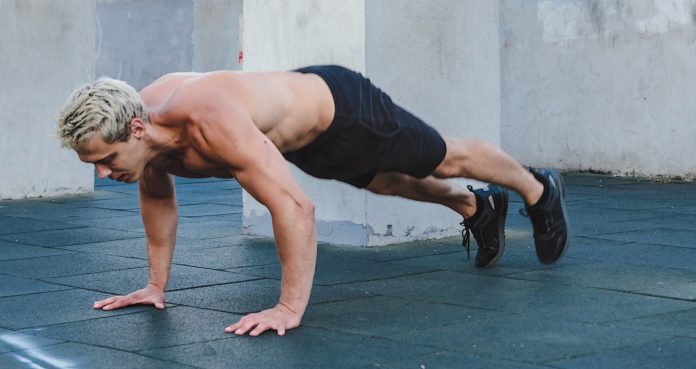
Best No Equipment Cardio Workouts
Best no equipment cardio workouts.
Cardio! That dreaded word, whether it’s Low Intensity Steady State (LISS) cardio or High Intensity Interval Training (HITT) cardio.
Most people prefer LISS as the name suggests, it’s very low impact and very low intensity but done for a period of time (45 minutes to and hour prior to meal 1 is most bodybuilders preferred option).
And HITT is interval training which alternates short periods of intense anaerobic exercise with less intense recovery periods, during which a person’s heart rate reaches at least 80 percent of its maximum capacity.
There are many debates out there as to which is preferred and as to which burns more fat but I won’t delve into that today.
So if you’re bored of the treadmill at the gym, jogging outdoors in the cold, or fed up of rowing machine or even the legendary elíptical machines, then check out my list of the best no equipment cardio workouts around.
Skipping / Jump Rope
Now I did say you don’t need any equipment and you can actually simulate a jump rope without actually needing a jump rope.
Simply simulate the arms as if you are holding a rope and jump accordingly while being in sync with your arms (as if your jumping over a rope).
Now according to the Cooper Institute Aerobic Test, jumping rope for ten minutes is the equivalent of doing a 30 minute run.
Now, if you want to burn more calories you cannot go wrong with this exercise, and if you jump rope faster this will lead to a more intense workout, as a 180 lb individual jumping for 10 minutes at 100 skips per minute will burn approximately 126 calories, based on the Metabolic Equivalent of Task (MET), and in this case the MET is 8.8.
Now if you want a more accurate reading then there are many calorie calculators online that can assist you or use the formula below:
Calories burned per minute = (MET** x body weight in Kg x 3.5) ÷ 200
**MET – Metabolic Equivalent of Task
*MET for 100 skips or less per minute: 8.8
MET for 100-120 skips per minute: 11.8
MET for 120-160 skips per minute: 12.3
Can be done with or without a rope.
Shadow boxing
Another no equipment cardio routine you can utilize with minimal space, is shadow boxing.
And many boxers shadow box to improve foot speed, agility, hand eye coordination and technique but this can also really get the heart rate going.
You can take on a:
square stance (literally square on with feet shoulder width apart)
fighter stance (feet staggered , with arms raised to cover the face)
Fighters stance with foot work incorporated
Now if you are right hand dominant you are classed as ‘Orthodox’ and if you are left hand dominant you are classed as a ‘Southpaw’.
The main punches are the:
Jab
Cross
Left hook
Right hook
Left uppercut
Right uppercut
As this is for fitness purposes rather than getting into a ring you can just do straight forward punches or make your own combo or stick the traditional combo below:
Jab, Jab, Cross (1.1.2)
Jab, Cross, Left Hook (1,2,3)
Jab, Cross, Left Hook, Cross (1,2,3,2)
Jab, Jab, Cross, Left Hook, RIght Uppercut (1,1,2,3,6)
Jab, Right Uppercut, Left Hook, Cross (1,6,3,2)
Now if you want to figure out the calories you have burnt then MET breakdown below will help you figure out your calorie output.
MET for boxing
Boxing, punching bag. 5.5
Boxing, sparring. 7.8
Boxing, in ring, general. 12.8
Alternative: Add small dumbbells and hold then while punching, this will add an even more increased shoulder burn.
Box Jumps
Box jump, or in this case, if you don’t have a box or bench or stool you can utilise then the stairs will work just as good.
This is an exercise that will help develop your explosive power, speed and even your strength.
As it’s a plyometric exercise, also known as plyos, it is beneficial for producing power and strength simultaneously. Plyos generally involves a stretch followed by a contraction of the muscles (so a jump being a prime example).
And if you actually incorporate box jumps directly after a set of squats, Post Activation Potentiation (PAP), occurs, and this is essentially the pairing of a heavy strength movement (back squat) followed by a plyometric movement, which in this case would be the box jump.
According to Daniel Lorenz, DPT, ‘PAP is a phenomenon by which the force exerted by a muscle is increased due to its previous contraction.
Fatiguing muscle contractions impair muscle performance, but non-fatiguing muscle contractions at high loads with a brief duration may enhance muscle performance.
So the muscle fibers that were not recruited in the squats essentially are raring to go and post heavy load should enable you to have a better performance, ie able to jump higher.
Based on a 185 lb person, the calories burned can range from 311-444 per 30 minutes.
An alternative to box jumps: Jumping over a bench. You can have more stability by placing your hands on the bench and jumping from left to right over the bench itself. (If you do not have a bench use something similar which you can jump over, a box, a crate, a railing, etc).
Other suggestions
Cardio workouts that require equipment
Other cardio workouts I would have high on my list are:
Swimming – An awesome all body cardio workout that is easy on the joints but helps build strength and endurance. It’s great if you have access to a pool or gym that has one. Alternative being the closest lake (kidding).
Battle ropes – again if you have a set already or have access to them at your gym this is a great all round cardio workout that manages to hit pretty much all the major muscle groups.
Barbell thrusters – yes It does involve a barbell and weights but you don’t need to go heavy for it to really kick in. Another great all body exercise that will improve your cardiovascular endurance.
And below is a list of plyo cardio exercises you can do at home in a small spaces:
Skaters
Burpees
Tuck Jumps
High Knees
Mountain Climbers
Now that’s enough cardio for today. Happy holidays but more importantly happy lifting!
For more news and updates, follow Generation Iron on Facebook, Twitter, and Instagram.
https://www.cooperinstitute.org/2017/04/10/strength-training-for-fitnessgram
https://pubmed.ncbi.nlm.nih.gov/29278062/
https://www.sciencedaily.com/terms/jump_rope.htm
https://www.health.harvard.edu/diet-and-weight-loss/calories-burned-in-30-minutes-of-leisure-and-routine-activities
https://www.ncbi.nlm.nih.gov/pmc/articles/PMC4637913/
https://pubmed.ncbi.nlm.nih.gov/32187147/
https://link.springer.com/article/10.2165/00007256-200939020-00004
https://www.ncbi.nlm.nih.gov/pmc/articles/PMC3164001/
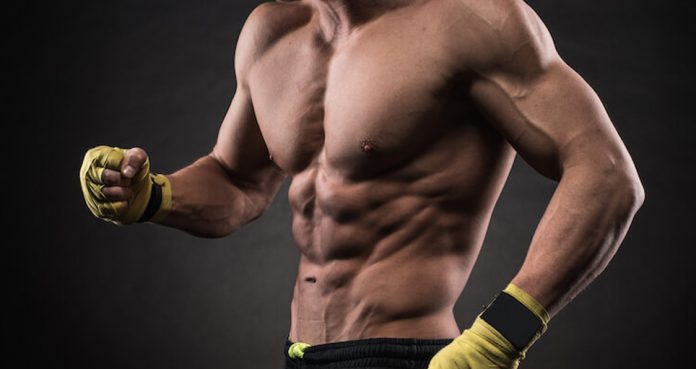
5 Tips For Staying Lean And Mean This Holiday Season
This Santa’s got abs for days.
So the holiday season is upon, and you know what that means. Trips to aunts and uncles houses we only talk to once a year quickly followed by a large overindulgent meal washed down by alcohol and a nice little nap to top it off. What’s on the agenda for the next day? rinse, lather, and repeat – just with leftovers.
The holiday struggle is real, so we’ve taken the liberty of comprising a list of 5 things you can do in order to break the vicious cycle that is late December. The list is practical guide of mental and physical things you can do when the going gets tough and the tough get eating. Check out our list below.
Drink Water
Hydration is key. Though this can go for anytime of the year, it’s especially important during the holidays as you’ll probably be consuming a lot of no no foods. Try having a glass of water before and after each meal to rev up your metabolism and cleanse your system.
Moderation
Hey, we get it. It’s the holidays, you’ve been busting your hump all year long, plus your geeky little cousin is finally getting married. You want to get down and have a little fun. We’re cool with that but there’s a right way to do it. Try to fill your plate with mostly healthy options and then smaller portions of the not so healthy ones. If you’re going to cheat, cheat once with your favorite of the unhealthy options.
Drink Alcohol Early
Drinking alcohol early is imperative. It gives your body time to break down the extra calories before going to bed – a time when you can really pack on the pounds. Alcohol also disrupts your sleeping pattern as it will wake you up as soon as the alcohol has burned through your system. Try to have a glass of water for every drink you consume (key term here is TRY).
Take a hike
No really, take a walk. Walking after a meal boosts your metabolism as well as helping with the digestive process. In addition, it just feels good. A brisk evening walk with your favorite half drunk family member is a cool experience – you’ll wonder why you never did it before. Try it!
Shoveling Snow
Usually reserved as a punishment or chore, shoveling snow actually burns a lot of calories as well as keeping your drive way clean – win win! As long as you’re dressed for the weather and remember to take frequent breaks you can turn this into some well needed personal time. Back breaking labor never felt so good.
Keep your routine
Tomorrow’s Christmas…so what? We know your text message and Facebook inbox are blowing up with invites to different holiday bashes but you’ve got to put the horse before the carriage. Don’t neglect your workout to go to a party, instead work out before or after the festivities. Working out before will give you the boost of energy you need to party all night long and setting up a training session for the next morning will keep you honest. If you know you’re going to get your ass handed to your by a personal trainer the next day you’re probably going to skip on that last whiskey sour – just sayin’.
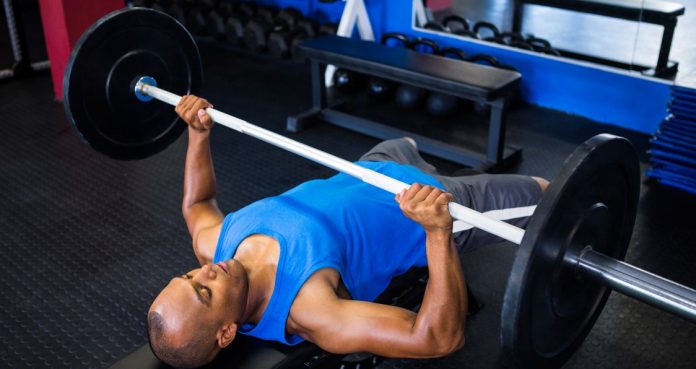
It’s Time You Ditch The Barbell Bench Press
Reasons to Give Up Bench Pressing
Barbell bench press is one of the most popular exercises. “How much do you bench?” is casually thrown around in gyms around the world. The bench press has been the symbol of strength for a long time.
The barbell bench press is a compound movement which incorporates multiple muscle groups. If you’re not careful while performing the bench press, it can cause more harm than good. Now is the best time to look for alternative chest exercises.
1. Plateau
When a person starts working out, the bench press is one of the first exercises he learns. Most people are too loyal to this exercise and always have a variation of it in their workouts. Performing the same exercises in every workout can cause you to hit a plateau.
If you’ve been benching for a long time but don’t see any progress in your pecs, you might have hit a plateau. If this is the case, you need to switch up your training and perform new exercises to shock your muscles and break the plateau.
2. Building Muscle
The bench press is a functional movement and is arguably not the best chest building exercise. Squats, deadlifts and bench press are a staple in a powerlifter’s training routine. People training to build muscle mass can do better by avoiding the bench press.
Powerlifters, strongmen, and weightlifters perform the bench press to build strength so they could perform explosive movements. On the other hand, bodybuilders need exercises which recruit and train the pectoral muscles to build size.
3. Injuries
A majority of injuries caused inside the gyms could be credited to the bench press. Pec tear is the most common injury caused due to bench pressing. If you have chest, shoulder or back injuries, you should stay away from this exercise.
If you have any of the injuries mentioned above, instead of giving up training your pecs you should work around your injuries by performing other exercises. Using training equipment like slingshots, elbow sleeves, etc. can be an aid in working out while you’re injured.
4. Targeting the Pectoral Muscles
You have a strict range of motion while performing the bench press which can limit the muscle fiber recruitment in your chest. Exercises using the dumbbells, machines or cables can help you target your pecs more efficiently.
Some people have a hard time performing the bench press and establishing a mind-muscle connection. These people end up recruiting their triceps and other supporting muscles. Exercises using the dumbbells and cables can help you in targetting your chest from different angles.
5. Training to Failure
Training to failure on the bench press can be a dangerous thing. The internet is full of videos of people dropping the barbell on their chests and necks. You certainly don’t want to find yourself in this situation.
If you’re going for a PR on the bench press, it is suggested you ask someone for a spot. On the other hand, going for failure while training with dumbbells, cables or machines is relatively less risky.
How often do you bench press? Let us know in the comments below. Also, be sure to follow Generation Iron on Facebook and Twitter.
*Header image courtesy of Envato Elements.
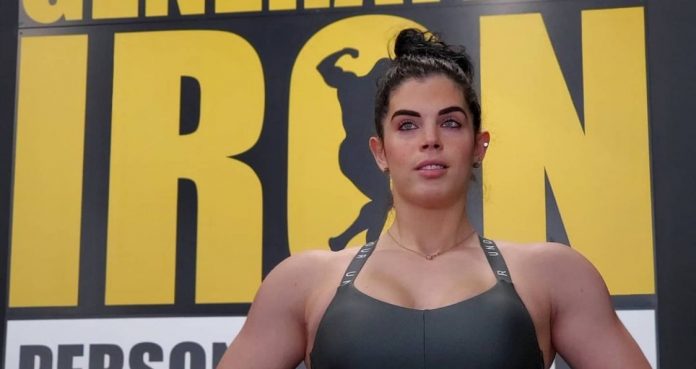
Shoulders With Sephora: Gains At Generation Iron Personal Training
Work your shoulders with Sephora as she grinds in the state-of-the-art Generation Iron gym.
Finding the right location to workout can be a daunting task, but Generation Iron Personal Training makes that easy. A fantastic gym with state-of-the-art equipment and knowledgeable trainers, your gains will become a reality in no time. Plus, with the ease and convenience of setting up a time to work out, Generation Iron Personal Training will make you actually want to get up and get moving.
We followed around Sephora, one of Generation Iron’s Personal Training trainers, as she walked us through a great shoulder workout. Neglecting to work out your shoulders can sacrifice strength, size, and that well-rounded physique you want most. With Sephora’s guidance, this shoulder workout is sure to give you the best gains around.
Let’s jump into this shoulder workout from Sephora so we see those gains we want most. With the right approach, we can better tackle any workout put in front of us. A great shoulder workout can be hard to come by but thankfully Sephora offers up this 5-exercise workout for ease, convenience, and gains.
About Sephora
Sephora found herself in a position many of us do, being tired of excuses and a lifestyle we want to change. Through hard work and dedication, Sephora has committed herself to building her body and shaping the necessary areas to see results she has great confidence in. She received her NASM certification and is on a mission to not only help change your body, but also your mindset on health and fitness.
Sephora’s Shoulder Workout
This shoulder workout from Sephora is a great way to build shoulder strength and size, while also aiding in stability and an overall well-rounded physique. A mix of machine and free weights exercises, you target each muscle of your shoulder differently to not neglect or miss out on any gains.
Exercises
Sets
Reps
Machine Shoulder Press
4
12
DB Lateral Raise
4
12
DB Front Raise
4
12
Alternating One Arm Arnold Press
4
12
Cable Upright Row
4
12
Exercise Breakdown
Machine Shoulder Press
The machine shoulder press is a great exercise for hypertrophy as it will offer healthy stress and nice resistance on your shoulders. Using the machine allows you to add more weight than a free weight shoulder press as well as work to improve form and learn to feel out this exercise. While the machine provides safety, it is important to focus on your technique to not build bad habits.
DB Lateral Raise
The dumbbell lateral raise is a nice shoulder exercise to strengthen those stabilizer muscles and improve shoulder stability. Building strength is obvious but working to tackle those muscle imbalances is also a great benefit to this exercise. It also has plenty of room for variations.
DB Front Raise
Dumbbell front raises are great for building sport specific strength but also functional movements. Another great way to improve any muscle imbalances, the options for you to succeed in terms of building a well-rounded physique are nowhere near impossible. Plenty of variations exist for this exercise as well.
Alternating One Arm Arnold Press
This exercise will build serious strength and size as a result of the complexity with the press and twist aspects. Alternating arms allows you to focus on form even more and stay dialed in as this exercise can be a killer. It can be taxing on your shoulders so working with the appropriate amount of weight will ensure less chance of injury.
Cable Upright Row
Cable upright rows are effective for building bigger traps and ensuring more width in your shoulders. A nice isolation exercise, there are plenty of variations to try but the benefit of the cable machine is more weight can be added, ensuring better form and increased mind-muscle connection.
Benefits Of Strong Shoulders
Having strong shoulders should not be overstated. The benefit to stronger, more stable shoulders can not only enhance sport specific movements, but also those more functional ones. Increasing strength, boosting stability, and adding to a well-rounded physique can be a game changer as you seek the best for your shredded aesthetic. This workout from Sephora will truly enhance your shoulder development with just 5 simple exercises. And with a great gym like Generation Iron Personal Training, you just can’t go wrong.
About Generation Iron Personal Training
This state-of-the-art training facility is 7,000 square feet, jam packed with elite equipment and uniquely designed to provide for a great workout and awesome atmosphere to motivate yourself to see massive gains. Everything you know about gym memberships and their shady hidden fees with additional costs are a thing of the past as you can book directly with registered trainers for one-on-one personal sessions. With the motto “Sweat Today, Shine Tomorrow”, you will become a new person, one with the confidence and physique to be proud of.
With plenty of room to work out and have your own space to get after it, Generation Iron Personal Training gym can be just what you need to succeed. Plus, parking is easy and convenient for a nice bonus.
Location & Address: 730 NY-304 in New City, New York
Phone Number: 845-664-8589
Email: [email protected]
Social Media: Follow us on Instagram for the best content and important updates to always be in the loop on Generation Iron Personal Training.
Check out the website for Generation Iron Personal Training here!
Wrap Up
This shoulder workout from Sephora at Generation Iron’s Personal Training gym is a great workout to boost strength and size, while also building stability and a well-rounded physique. The right approach under the guidance of a knowledgeable trainer can make or break your gains and give you the best for your desired goals. Generation Iron Personal Training is a fantastic way to see your goals become reality so don’t hesitate to reach out and see how this is a great fit for you.
Let us know what you think in the comments below. Also, be sure to follow Generation Iron on Facebook, Twitter, and Instagram.
*Images courtesy of Sephora Instagram and Generation Iron
